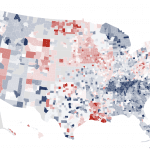Most brokerages are drowning in dashboards but starved for signal. Operators glance at GCI, units, and recruiting wins, then wonder why margin still erodes. The fix is not more data. It’s a short list of brokerage KPIs that actually predict profitability—and a weekly operating rhythm to act on them.
In our advisory work with top 5% operators, five metrics consistently separate scalable firms from high-revenue, low-margin busywork. These are not accounting tallies; they are decision tools. Measured weekly, they expose unit economics, capacity constraints, and growth quality—early enough to course-correct.
1) Agent LTV:CAC Ratio (Recruiting Economics)
What it is: The ratio of a producing agent’s lifetime value (net profit contribution over tenure, discounted) to the fully loaded cost to acquire and onboard that agent (marketing, recruiter time, signing incentives, onboarding, ramp support). This is the most important growth KPI for a brokerage because recruiting is your primary revenue engine.
Why it matters: Scale only creates value when the marginal agent adds net profit after splits, cap exceptions, lead costs, and support. A strong LTV:CAC (≥3:1) signals sustainable growth; anything below 2:1 indicates you’re buying revenue that won’t translate to profit. See the fundamentals of customer lifetime value in A Refresher on Customer Lifetime Value from Harvard Business Review and adapt the logic for agent economics.
How to use it: Segment by channel (inbound, referral, outbound recruiting, team lift-outs). Track CAC payback (months to breakeven on a new agent) and aim for payback inside 9–12 months for mid-cap brokerages and inside 6–9 months for teams with company-provided leads. If the ratio drops, pause spend on that channel, tighten selection criteria, or adjust split structures for early ramp.
2) Gross Margin per FTE (Operating Leverage)
What it is: Gross margin (company dollar plus ancillary gross profit) divided by total full-time equivalents (agents excluded). This normalizes productivity of the platform—ops, marketing, TC, ISA, finance—against the profit pool they enable.
Why it matters: In a margin-pressured environment, operational leverage is nonnegotiable. Per Emerging Trends in Real Estate 2025 by PwC and the Urban Land Institute, cost of capital and operating costs remain elevated, forcing firms to institutionalize efficiency. Watching gross margin per FTE weekly surfaces bloat early—before it hardens into fixed cost.
How to use it: Set a floor by business model. For split-driven brokerages, target ≥$18,000–$25,000 monthly gross margin per FTE; for teams with in-house lead gen and ISAs, ≥$22,000–$30,000. If you’re under target, audit capacity utilization: remove low-yield tasks, automate repeatable workflows, and consolidate vendor overlap. If you’re above target but cycle times are slipping, you’re under-resourced—add selectively where bottlenecks are quantifiable.
3) Lead-to-Appointment Conversion by Source (Acquisition Quality)
What it is: The percentage of qualified inquiries that convert to set-and-held appointments, broken out by source (referral, sphere, PPC, portal, social, events, builder, relocation). Track this weekly and by agent/ISA.
Why it matters: Appointments sit at the hinge of pipeline value. You don’t control closings; you control quality inputs and conversion moments. McKinsey’s research on sales throughput shows disciplined pipeline management drives higher growth and win rates; see Sales pipeline management: Boosting sales performance.
How to use it: Establish source-level baselines (e.g., referral 60–70%, sphere 35–50%, PPC 8–15%, portal 5–10%), then set weekly thresholds and coach to the gap. Appointment quality beats appointment volume; if a channel’s conversion falls below baseline three weeks running, pause spend, refine targeting, or change the offer. Pair this KPI with talk-time-to-appointment and no-show rate to eliminate waste in the first 48 hours of lead capture.
4) Pipeline Coverage and Cycle Time (Throughput)
What it is: Weighted pipeline coverage equals the value of likely closings in the next 90 days divided by the next-90-day revenue goal. Cycle time tracks days from first contact to listing agreement and from listing agreement to close (or buyer agreement to close).
Why it matters: Coverage without velocity is theater. High-performing firms manage both. A healthy brokerage maintains 3–4x coverage on the 90-day goal with cycle-time discipline to turn that coverage into cash. Pipeline visibility reduces forecast error and protects cash planning.
How to use it: Maintain stage probabilities based on your historic conversion, not vendor defaults. Review slippage weekly: which listings stalled, which buyers aged past median, which agents sit on inactive files. If coverage drops below 3x, do not paper over the gap with headcount—you have a demand problem or a stage-conversion problem. If cycle time expands, isolate the bottleneck (pricing, prep, appraisal, underwriting, turn time in TC) and fix the step, not the whole system.
5) Net Revenue Retention from Existing Agents (The Quiet Profit Engine)
What it is: Year-over-year percentage of revenue retained from the same agent cohort, including upsell (ancillary adoption, higher price point mix) and downsell (split drift, concessions) and net of churn.
Why it matters: You paid to acquire your agents. NRR measures whether the existing book is compounding or decaying. In recurring-revenue businesses, net revenue retention above 100% is the growth flywheel; brokerages can achieve similar effects via higher average sales price, improved agent productivity, and ancillary capture (mortgage, title, insurance) that increases company dollar without changing splits.
How to use it: Segment your core cohort (top 20% by contribution) and protect them. If NRR falls below 95%, inspect root causes: leadership access, marketing effectiveness, TC friction, or split creep used to “save” at-risk talent. Rebuild value, not discounts. Tie this KPI to a formal quarterly business review for your top agents and teams, using documented plans—not optimism—as the retention lever.
Execution Rhythm: Make Brokerage KPIs Drive Decisions
Metrics only matter when they change behavior. The operating system we see win inside elite brokerages is simple:
- Weekly: 45-minute KPI stand-up with the leadership triad (principal, sales ops/ISA lead, finance). Review the five brokerage KPIs, exceptions only, decide 1–3 actions.
- Monthly: Channel review on recruiting CAC and appointment conversion with clear keep/kill/scale decisions.
- Quarterly: Capacity audit tied to gross margin per FTE. Add or reassign only if the KPI case is clear.
Keep the instrumentation tight. Each KPI should be sourced from a single source of truth (CRM plus accounting), have an owner, a definition, and a threshold. If a metric can’t trigger a decision, drop it. If a metric is argued every week, redefine it and lock the logic.
Benchmarks, Context, and Risk Controls
Benchmarks are directional; your model, market mix, and cost basis set the real thresholds. What endures across cycles is the pattern: efficient growth beats absolute growth. That aligns with broader sector guidance that cost discipline and pipeline rigor sustain margins in volatile markets, as highlighted in Emerging Trends in Real Estate 2025 and the operating focus advocated in Sales pipeline management: Boosting sales performance.
Mitigate data risk by reconciling weekly KPI snapshots with month-end financials. Cash is the fail-safe. If pipeline or LTV assumptions are optimistic, cash conversion will expose it quickly. Build an internal red team to challenge definitions quarterly, and keep all KPI formulas in a plain-English playbook accessible to leaders.
What to Stop Measuring
Cut vanity counts (leads, impressions, social followers) that don’t connect to revenue or cost. Eliminate unsegmented averages that hide underperformance (e.g., conversion without source split, margin without team/agent cohort). If a metric cannot be owned and improved by a named operator this quarter, it’s reporting, not a KPI.
The Advisory Lens
RE Luxe Leaders® exists to institutionalize this discipline. In top firms, these five brokerage KPIs become the drumbeat of leadership: resource allocation, compensation design, recruiting priority, and exit timing. The objective is simple: higher-quality growth with less volatility, compounding into valuation. If you need a tight framework, the RELL™ operating cadence brings the instrumentation, definitions, and review rhythm that elite operators adopt and keep.
For additional operator-focused resources and case studies, visit RE Luxe Leaders®.
Conclusion
You don’t need more data. You need fewer, harder metrics—tracked weekly and used to make decisions. Focus on agent LTV:CAC, gross margin per FTE, lead-to-appointment conversion, pipeline coverage plus cycle time, and net revenue retention. These brokerage KPIs tell you, early, whether growth is profitable, replicable, and defensible. Everything else is noise.





